
The bamboo rats are four species of rodents of the subfamily Rhizomyinae. They are the sole living representatives of the tribe Rhizomyini. All are found in South Asia, Southeast Asia and East Asia.

The KamchatkaPeninsula is a 1,250-kilometre-long (777 mi) peninsula in the Russian Far East, with an area of about 270,000 km2 (104,248 sq mi). The Pacific Ocean and the Sea of Okhotsk make up the peninsula's eastern and western coastlines, respectively. Immediately offshore along the Pacific coast of the peninsula runs the 10,500-metre-deep (34,449 ft) Kuril–Kamchatka Trench.

The Sai Kung Peninsula is a peninsula in the easternmost part of the New Territories in Hong Kong. Its name comes from Sai Kung Town in the central southern area of the peninsula. The southern part of the peninsula is administrated by Sai Kung District, the north by Tai Po District and the northwest by Sha Tin District.
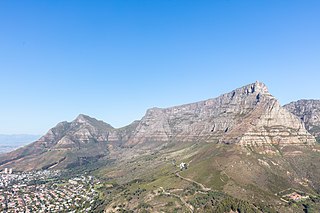
Table Mountain National Park, previously known as the Cape Peninsula National Park, is a national park in Cape Town, South Africa, proclaimed on 29 May 1998, for the purpose of protecting the natural environment of the Table Mountain Chain, and in particular the rare fynbos vegetation. The park is managed by South African National Parks. The property is included as part of the UNESCO Cape Floral Region World Heritage Site.

Hellinsia didactylites is a moth of the family Pterophoridae. It is found in most of Europe, east into Russia.

Ancylis upupana is a moth of the family Tortricidae. It is found in most of Europe, east to Russia and China.
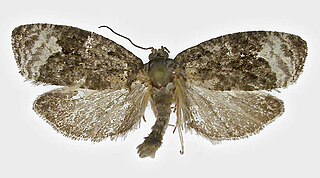
Apotomis capreana is a moth of the family Tortricidae. It is found in most of Europe, east to the eastern part of the Palearctic realm.
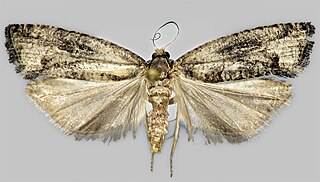
Epinotia maculana is a moth of the family Tortricidae. It is found in most of Europe, east to the eastern part of the Palearctic realm.

Eudemis porphyrana is a moth of the family Tortricidae. It is found in most of Europe, east to the eastern part of the Palearctic realm.

Phiaris bipunctana is a moth of the family Tortricidae. It is found in most of Europe, east to the eastern part of the Palearctic realm. It was recently discovered in Canada (Manitoba).
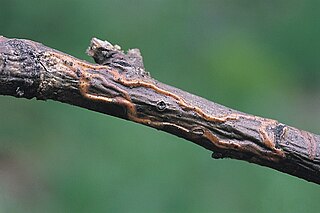
Ectoedemia atrifrontella is a moth of the family Nepticulidae. It is found in most of Europe except Iceland, Ireland, Belgium and most of the Balkan Peninsula. It is also present in the Near East.

Selania leplastriana, the Leplastrier's piercer, is a moth of the family Tortricidae. It is found in most of southern Europe except the Balkan Peninsula. It is also found in the Near East and North Africa.

Agonopterix liturosa is a moth of the family Depressariidae. It is found in most of Europe. It is also found in the Near East and the eastern part of the Palearctic realm.

Levipalpus hepatariella is a species of moth of the family Depressariidae. It is found in most of Europe, except Ireland, Belgium, the Iberian Peninsula, Ukraine and most of the Balkan Peninsula. In the east its range extends to the eastern part of the Palearctic realm.

Crambus hamella is a species of moth in the family Crambidae described by Carl Peter Thunberg in 1788. It is found in most of Europe, east to the Russian Far East and Japan. It is also found in North America, including Alberta, Arizona, Manitoba, Michigan, Oklahoma and Ontario.
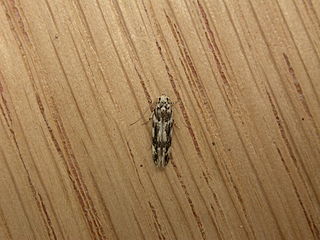
Parachronistis albiceps, the wood groundling, is a moth of the family Gelechiidae. It is found in most of Europe, except the Iberian Peninsula and part of the Balkan Peninsula. Outside of Europe, it is found in southern Siberia, the Russian Far East and Korea.
Eupithecia alliaria is a moth in the family Geometridae. It is found from France and the Iberian Peninsula east through south-central Europe to Russia and most of the Balkan Peninsula. It is also found in the Near East and North Africa.

Argolamprotes micella, the bright neb, is a moth of the family Gelechiidae. It is found in most of Europe, except Ireland, the Iberian Peninsula and most of the Balkan Peninsula. Outside of Europe, it is known from Siberia, the Russian Far East, the southern Kuril Islands and Japan. The habitat consists of hedgerows, open woodland and gardens.

Chionodes continuella is a moth of the family Gelechiidae. It is found from most of Europe, east to Japan. It is also present in most of North America.
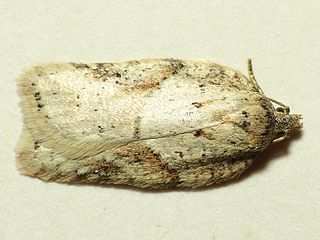
Acleris logiana, the black-headed birch leaffolder moth or grey birch button, is a moth of the family Tortricidae. It was described by Carl Alexander Clerck in 1759. It is found in most of Europe, except Ireland, Portugal, most of the Balkan Peninsula and Ukraine. It is also found in North America, the Russian Far East, Korea and Japan.



















